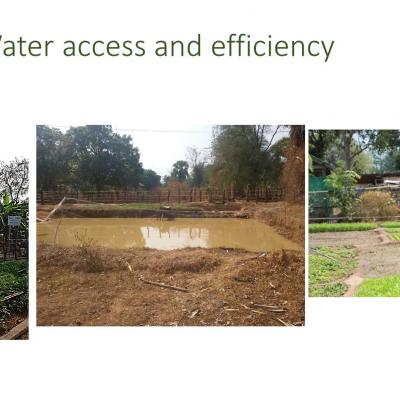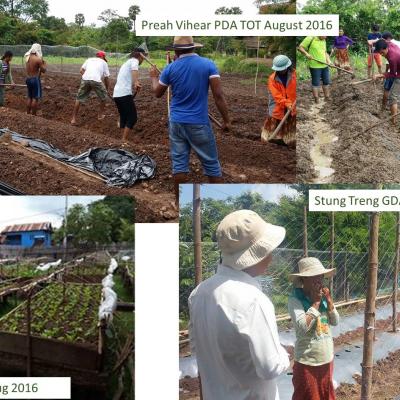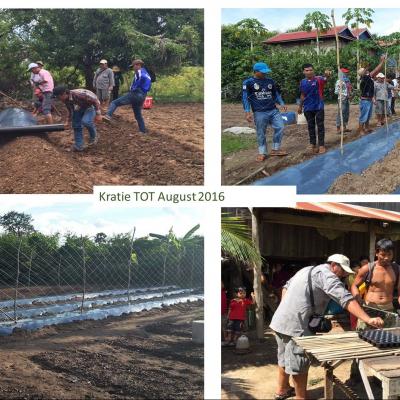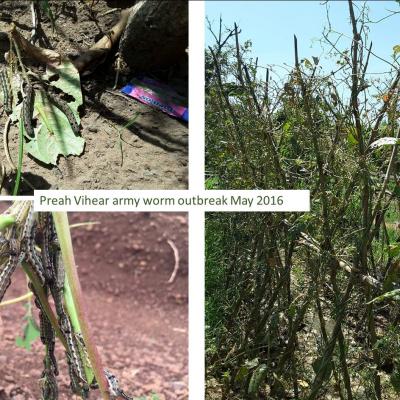CEDRIG Operational
PDF ReportCambodian Horticulture Project Advancing Income and Nutrition (CHAIN) Phase I
Overview
General Information
Author
Moritz Krüger
Last updated
November 2020
Overall goal
Promotion of horticulture value chains in Preah Vihear, Stung Treng, Kratie and Oddar Meanchey provinces, with a strong focus on women and delivering sustainable income growth and improved household food security and resilience
Country
- Cambodia
Budget
CHF 4.000.000
Duration
01.12.2014 - 30.11.2017 (Phase I)
Summary
Description
In Cambodia, more than 40 % of the rural poor suffer from food insecurity. The increasing market demand for vegetable and fruits provides a huge opportunity for small holder farmers and processors, in particular women to increase income and food security. The Cambodia Horticulture Advancing Income and Nutrition (CHAIN) project supports farmers and processors in increasing sustainable production, income and resilience in four of the poorest provinces of Cambodia - Kratie, Stung Treng, Preah Vihear and Oddar Manchey. With the particular focus on the fruits and vegetables sector, CHAIN tackles market system constraints to improve the service delivery to poor farmers households, women headed households and ethnic minorities. CHAIN will support smallholder farmers to diversify into growing fruit and vegetables through the introduction of modern horticultural techniques and market linkages required to generate much-needed additional income, and it will also address poor household nutrition by supporting a diversification of diets.
Keywords
- agriculture and food security
Sectors of Intervention
- Agriculture
- Food security
- Rural development
- Water management
Documents
Images
Logos
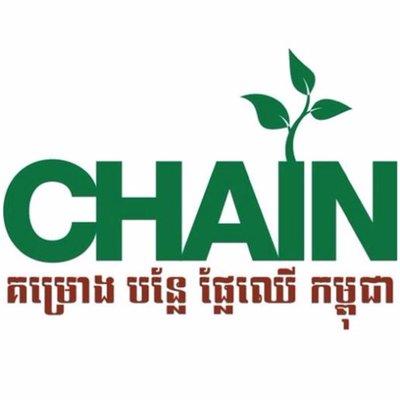


Risk perspective
Hazards arising from environmental degradation
Hazard name
Pests and epidemics
Consequence
Loss of income and crop production
Consequence description
The invasion of flea beetle larvae (Chrysomelidae: Alticini) leads to a severe destruction of vegetables, especially root and leaf vegetables. Flea beetles execute their most severe attacks during dry weather and are most active on sunny days. Occurrence increased in the past 3-4 years.
Severity
Harmful
Vulnerabilities
Increased pressure on smallholder farmers and income, loss in crop and vegetable production, low means of savings, limited knowledge of mitigation measures.
Likelihood
Likely
Significance
Medium risk
Selected Risk
YesSelected Measure
YesSelected Measure
YesNatural hazards (hydro-meteorological and geological)
Hazard name
Flash floods, floods
Consequence
Destruction of crops and vegetables, loss of income
Consequence description
Weather patterns are increasingly unpredictable: increased heavy rainfall, flooding, unpredictable start of the rainy season. Long-lasting episodes with too much rain cause rotting of rice plants & vegetables during rainy season. The existing drainage and irrigation practices used by communities are largely insufficient to ensure the survival of crops and seeds during and after intense rain episodes followed by severe droughts. No sufficient early warning system is in place, neither for households nor for the agricultural sector. Current weather forecasts and traditional knowledge have proven inaccurate and unreliable.
Severity
Harmful
Vulnerabilities
Communities' coping mechanisms are overwhelmed. Frequent (often annual) and often complete loss of crop production.
Likelihood
Very likely
Significance
High risk
Selected Risk
YesSelected Measure
YesSelected Measure
YesHazard name
Droughts
Consequence
Destruction of crops and vegetables, loss of income
Consequence description
Higher irregularity of the rainy/dry seasons: earlier onset of the hot season, prolonged duration of the dry season, and shortened rainy season.
Severity
Extremely harmful
Vulnerabilities
Communities' coping mechanisms are overwhelmed. Loss of crop production due to disruption of the traditional planting-replanting-harvesting cycle. Traditional knowledge is no longer applicable.
Likelihood
Very likely
Significance
High risk
Selected Risk
YesSelected Measure
YesConsequence
Long-term lack of water availability
Consequence description
Water scarcity and droughts are relatively new in the project area (tropical Aw climate). Water resources are used without regulation. Available water resources are inadequately monitored or unknown. Groundwater levels are declining at an estimated rate of 20cm/year, but no consistent water resources monitoring is in place.
Severity
Extremely harmful
Vulnerabilities
Agricultural sector and smallholder farmers are already not prepared to droughts or water scarcity. Further water usage by the growing agricultural sector will put more pressure on water resources and aggravate the situation.
Likelihood
Likely
Significance
High risk
Selected Risk
YesSelected Measure
YesSelected Measure
YesHazards arising from climate change (and climate variability)
Impact perspective
Impact on the environment
Component of the project
Commercial and homestead producers and processors increase productivity (incl. year-round production)
Potential negative impact
Increased use of chemical fertilizers and pesticides
Selected impact
YesSelected Measure
YesPotential negative impact
Increased use of (ground)water resources
Selected impact
YesSelected Measure
Yes
